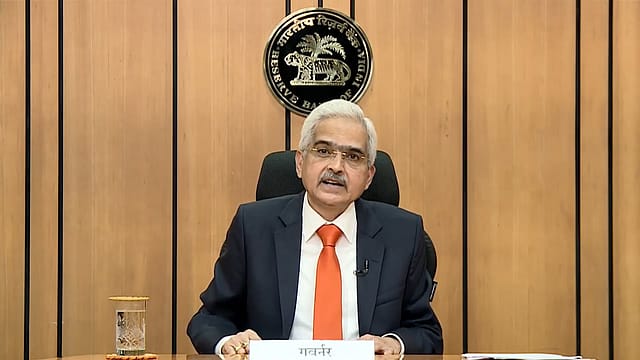Shaktikanta Das pitches for rupee, CBDC use for cross-border trade in South Asia
ADVERTISEMENT

Reserve Bank of India Governor Shaktikanta Das today said the rupee settlement in cross-border trade and its digital currency (CBDC) can be the areas of greater cooperation in South Asia. It said the global trade outlook for 2023 remains "overcast", but greater intraregional trade in South Asia can enhance opportunities for growth and employment in the region.
Speaking at the high-level conference co-organised by International Monetary Fund (IMF) Asia and Pacific Department and IMF South Asia Regional Training and Technical Assistance Centre, New Delhi, Das said a key dimension of cooperation is learning from each country's common goals and challenges.
Das outlined six policy priorities for the South Asian region -- taming inflation, containing external debt, raising productivity, strengthening cooperation for energy security, cooperation for a greener economy and promoting tourism.
During the first three quarters of 2022, food price inflation in South Asia averaged more than 20%. "The region’s heavy dependence on imported fossil fuels has made it vulnerable to imported fuel inflation," said Das. He added that for successful disinflation, credible monetary policy actions and targeted supply-side interventions, fiscal, trade policy and administrative measures are needed.
January 2026
Netflix, which has been in India for a decade, has successfully struck a balance between high-class premium content and pricing that attracts a range of customers. Find out how the U.S. streaming giant evolved in India, plus an exclusive interview with CEO Ted Sarandos. Also read about the Best Investments for 2026, and how rising growth and easing inflation will come in handy for finance minister Nirmala Sitharaman as she prepares Budget 2026.
The surge in external debt in recent years and associated vulnerabilities have undermined macroeconomic stability in several South Asian countries, he said. "External debt, which was already elevated in low-and middle-income countries (that include all South Asian economies) in the pre-pandemic period, surged to $9.3 trillion in 2021 from US$ 8.2 trillion in 2019, an increase of $1.1 trillion."
He said as per the estimates of the IMF, South Asia contributes nearly 15% to global growth, led by India and Bangladesh. "The region also receives one-fifth of total remittance flows in the world."
He said the South Asian region has grown, responding to formidable global challenges in the past, including the food crisis of the 1960s, the successful implementation of the Green Revolution, and the oil shocks of the 1970s.
Notably, as per the Asian Development Bank’s December 2022 outlook, the South Asian region’s GDP is projected to grow at 6.5% in 2022 and 6.3% in 2023. Das said notwithstanding global challenges, like Covid, and the Russia-Ukraine war, the World Economic Outlook database (October 2022) of the IMF shows India, Bangladesh and Maldives would be among the fastest-growing economies in the world in 2022 and 2023.
The World Bank has also stated that regional cooperation is critical and would be a win-win for all countries of the South Asia region. "Intraregional trade is currently only one-fifth of its potential, implying an annual shortfall of US$44 billion. The World Bank assessment also suggests that a common electricity market for Bangladesh, Bhutan, India and Nepal can yield savings of US$17 billion in capital costs," he said.
Investment in transport and logistics could help reduce the cost of container shipments in South Asia, he said. A study by the IMF (2019) on South Asia suggested that more than 150 million people will enter the South Asian labour force by 2030. "The dependency ratio is expected to continue ebbing for almost two decades, indicating the strong demographic dividend the region is set to reap," said Das.
